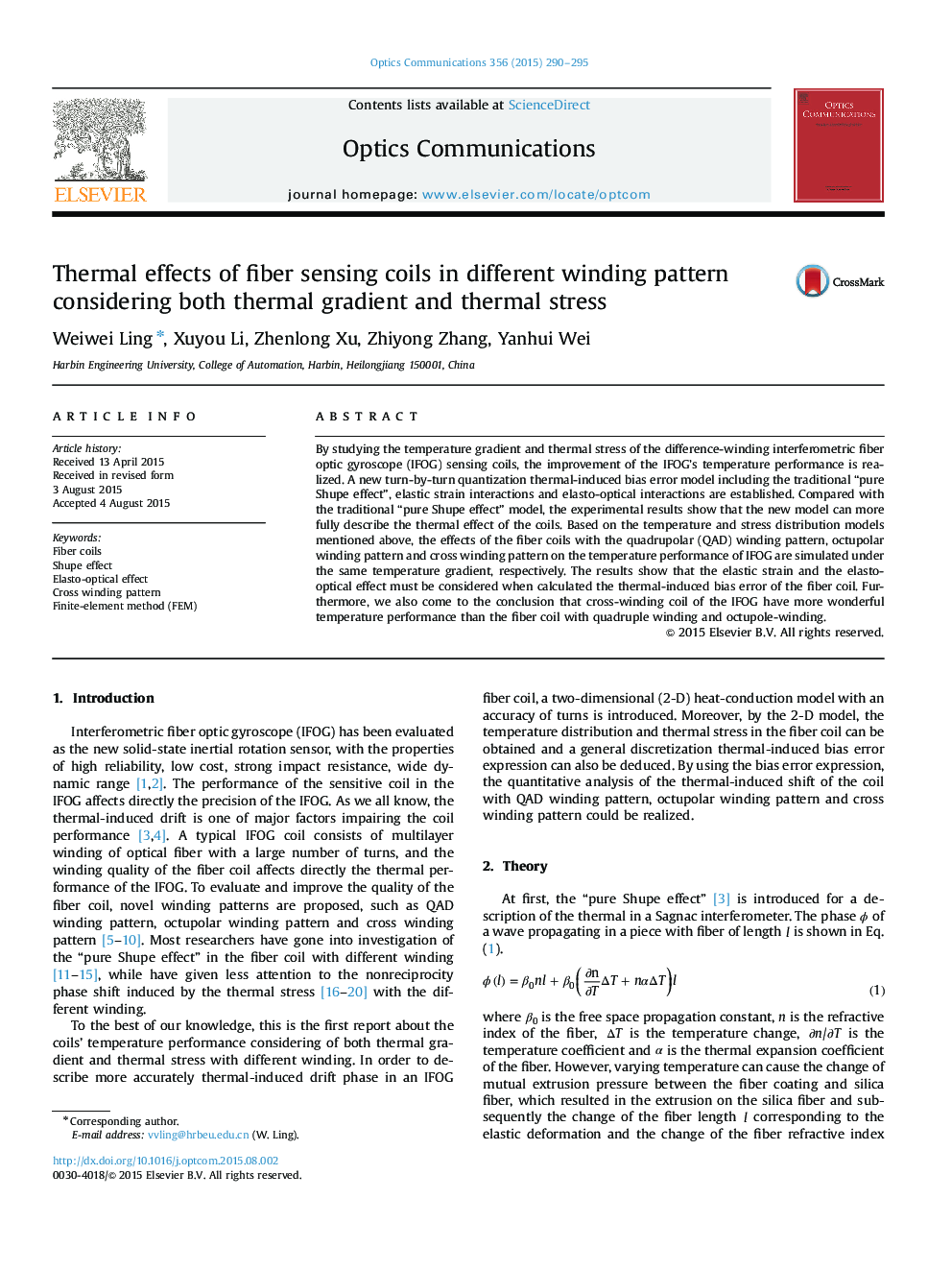| Article ID | Journal | Published Year | Pages | File Type |
|---|---|---|---|---|
| 7929327 | Optics Communications | 2015 | 6 Pages |
Abstract
By studying the temperature gradient and thermal stress of the difference-winding interferometric fiber optic gyroscope (IFOG) sensing coils, the improvement of the IFOG's temperature performance is realized. A new turn-by-turn quantization thermal-induced bias error model including the traditional “pure Shupe effect”, elastic strain interactions and elasto-optical interactions are established. Compared with the traditional “pure Shupe effect” model, the experimental results show that the new model can more fully describe the thermal effect of the coils. Based on the temperature and stress distribution models mentioned above, the effects of the fiber coils with the quadrupolar (QAD) winding pattern, octupolar winding pattern and cross winding pattern on the temperature performance of IFOG are simulated under the same temperature gradient, respectively. The results show that the elastic strain and the elasto-optical effect must be considered when calculated the thermal-induced bias error of the fiber coil. Furthermore, we also come to the conclusion that cross-winding coil of the IFOG have more wonderful temperature performance than the fiber coil with quadruple winding and octupole-winding.
Keywords
Related Topics
Physical Sciences and Engineering
Materials Science
Electronic, Optical and Magnetic Materials
Authors
Weiwei Ling, Xuyou Li, Zhenlong Xu, Zhiyong Zhang, Yanhui Wei,
